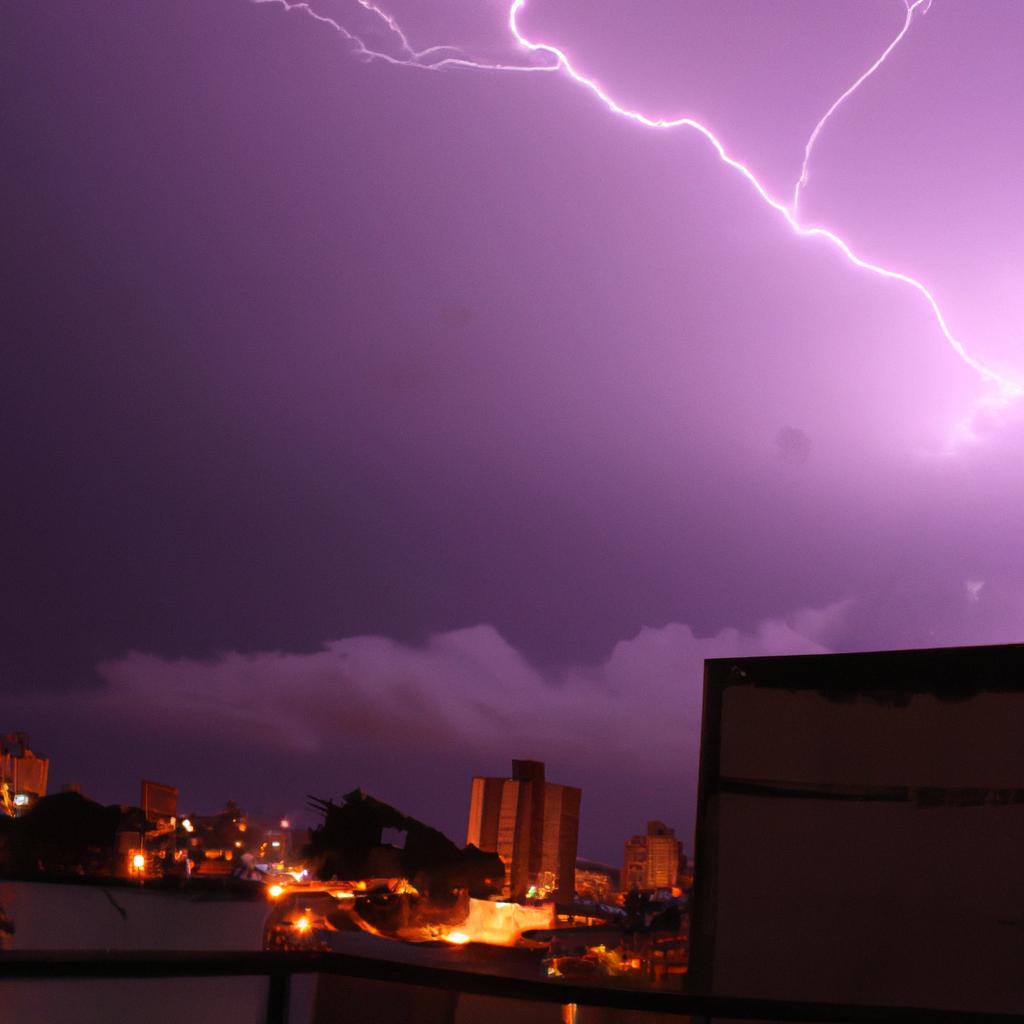Have you ever heard of Venezuela lightning? Prepare to be captivated by this fascinating phenomenon that occurs in the Catatumbo River region of Venezuela. With an average of 250 lightning flashes per square kilometer per year, this area has rightfully earned the title of the lightning capital of the world. The lightning is so frequent and intense that it has even been used for navigation by ships and airplanes.
But what makes Venezuela lightning so unique? In this article, we will embark on a journey to explore this captivating natural occurrence, its causes, and its impact on the environment and human life. By understanding Venezuela lightning, we not only contribute to scientific research but also prioritize the safety of those living in the region.
What Exactly is Venezuela Lightning?
Defining the Phenomenon
Venezuela lightning, a mesmerizing natural occurrence, takes place in the Catatumbo River basin in Venezuela. It is generated when a massive electrical discharge travels within the atmosphere, either between clouds or from a cloud to the ground. The result is the appearance of lightning bolts that are visible from over 70 km away.
Characteristics of Venezuela Lightning
Venezuela lightning stands out for several reasons. Firstly, it exhibits continuity, lasting for several hours without interruptions. It can be witnessed up to 300 nights each year, with heightened activity occurring from April to November. What’s more, the lightning is often accompanied by thunder, wind, and rain, creating a truly spectacular natural show.
Another distinguishing feature of Venezuela lightning is its height. The lightning bolts can reach an impressive 5 km, making them some of the tallest lightning bolts in the world. Moreover, their brightness is extraordinary, visible from several kilometers away.
Despite the beauty and wonder of Venezuela lightning, it is important to note that it can also pose risks to human safety. The region’s high frequency of lightning strikes puts individuals in danger. In the following section, we will explore the causes behind Venezuela lightning and why it occurs specifically in this region.
The Causes of Venezuela Lightning
Venezuela lightning, a unique type of lightning, is exclusive to the Catatumbo River region of Venezuela. Several factors contribute to the occurrence of this phenomenon, primarily geographical and meteorological conditions. Let’s delve deeper into these causes.
Geographical Factors
The geography of the Catatumbo River region plays a significant role in the occurrence of Venezuela lightning. This area sits at the convergence of the Andes Mountains, the Perijá Mountains, and Lake Maracaibo. Such a unique location creates a convergence zone for winds and moisture, leading to the formation of thunderstorms.
Another crucial factor is the region’s topography. The flat terrain surrounding Lake Maracaibo allows for the accumulation of warm, moist air, creating ideal conditions for thunderstorms and lightning.
Meteorological Factors
Meteorological factors also contribute to Venezuela lightning, including wind convergence, changes in atmospheric pressure, and temperature disparities. When warm, moist air from the Caribbean Sea collides with cooler, drier air from the Andes and Perijá Mountains, an unstable atmosphere conducive to thunderstorm formation takes shape.
Furthermore, the presence of the Catatumbo Breeze, a local wind system, contributes to the occurrence of Venezuela lightning. This breeze arises from temperature differences between the land and the lake, generating a continuous airflow that fuels thunderstorms.
Differences between Venezuela Lightning and Other Lightning Types
Venezuela lightning sets itself apart from other lightning types in several ways. Firstly, it is a continuous discharge of lightning that can last for up to 10 hours, unlike the brief flashes commonly observed. Secondly, it occurs exclusively in this particular location, making it a localized phenomenon.
In conclusion, the unique geography and meteorological factors of the Catatumbo River region contribute to the occurrence of Venezuela lightning. Understanding these causes is essential for scientific research and for developing safety measures for residents in the area.
The Impact of Venezuela Lightning
Venezuela lightning has a significant impact on the environment and human life in the region. Let’s take a closer look at two main aspects of this impact:
Effects on the Environment and Ecosystem
Venezuela lightning plays a critical role in the local ecosystem. The high frequency of lightning strikes in the Catatumbo River region contributes to soil fertility, providing essential nutrients for vegetation growth. Additionally, the electrical discharges from lightning promote the production of ozone, which helps protect the earth’s atmosphere from harmful ultraviolet radiation.
However, the intense and frequent lightning strikes can also have adverse effects on the ecosystem. The heat generated by lightning can cause wildfires, destroying vegetation and wildlife habitats. Furthermore, the lightning strikes can be harmful to aquatic life, affecting water quality and endangering fish populations.
Effects on Human Life and Safety
While Venezuela lightning is a natural wonder, it also poses significant risks to human life and safety. The high frequency and intensity of lightning strikes can be dangerous for those residing in the region. Lightning strikes can cause injuries or even death to individuals caught outside during a storm.
Moreover, the lightning strikes can damage buildings and infrastructure, leading to power outages and other disruptions. The intense thunder and lightning can also cause psychological distress for residents, resulting in anxiety and other mental health problems.
In conclusion, while Venezuela lightning is beautiful and awe-inspiring, it also has significant impacts on the environment and human life. It is crucial to understand these impacts to ensure the safety and well-being of those living in the region.
Research and Study on Venezuela Lightning
Scientific Studies and Experiments on the Phenomenon
Over the years, several scientific studies and experiments have been conducted to unravel the mysteries surrounding Venezuela lightning. Researchers have employed various methods, including satellite imagery, lightning detection networks, and field observation, to capture data and analyze the phenomenon.
One noteworthy study was carried out by a team of scientists from the University of Manchester, UK. They used satellite imagery to collect data on lightning frequency and location, subsequently analyzing the information to discern the characteristics of Venezuela lightning. Their findings revealed that the lightning in the region possesses distinct frequency and duration, setting it apart from other lightning types.
Another research endeavor conducted by scientists from the University of Los Andes in Venezuela employed a lightning detection network to study the electrical properties of Venezuela lightning. They discovered that the lightning displayed a positive charge, an uncommon characteristic for lightning. They hypothesized that this peculiarity could be attributed to the unique geographical and meteorological conditions of the region.
Discoveries and Findings on Venezuela Lightning
Scientific research and study have yielded valuable discoveries and findings regarding Venezuela lightning. One of the most significant findings is its importance to the local ecosystem, contributing to soil fertility and supporting vegetation growth.
Another discovery is that Venezuela lightning serves as a critical nitrogen source for the surrounding area. The lightning converts atmospheric nitrogen into a reactive form that can be utilized by plants, which is vital for the growth and development of local flora.
Furthermore, researchers have found that Venezuela lightning holds cultural significance for the region’s inhabitants. It is seen as a symbol of identity and pride, deeply ingrained in their lives for generations.
In conclusion, research and study on Venezuela lightning have provided us with valuable insights into this fascinating natural occurrence. Through scientific experimentation and observation, we have gained a deeper understanding of the phenomenon, as well as its importance to the local ecosystem and culture.
Concluding Thoughts
Venezuela lightning is an extraordinary and awe-inspiring natural phenomenon that deserves our attention and comprehension. Exploring its characteristics, causes, and impact allows us to gain insights into the intricate interactions between nature and human life.
As we have seen, Venezuela lightning holds significant cultural, ecological, and scientific value. It is a symbol of identity and pride for the region’s inhabitants, contributing to soil fertility and supporting the growth of vegetation. Furthermore, ongoing research and study provide valuable knowledge in the fields of meteorology, geology, and atmospheric science.
At TooLacks, we are committed to providing our readers with accurate and engaging content that explores the wonders of nature. We hope that this article has sparked your interest in Venezuela lightning and motivated you to learn more about it. Stay tuned for more exciting articles on the environment, gardening, animals, and more.



